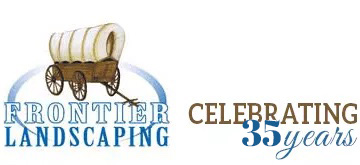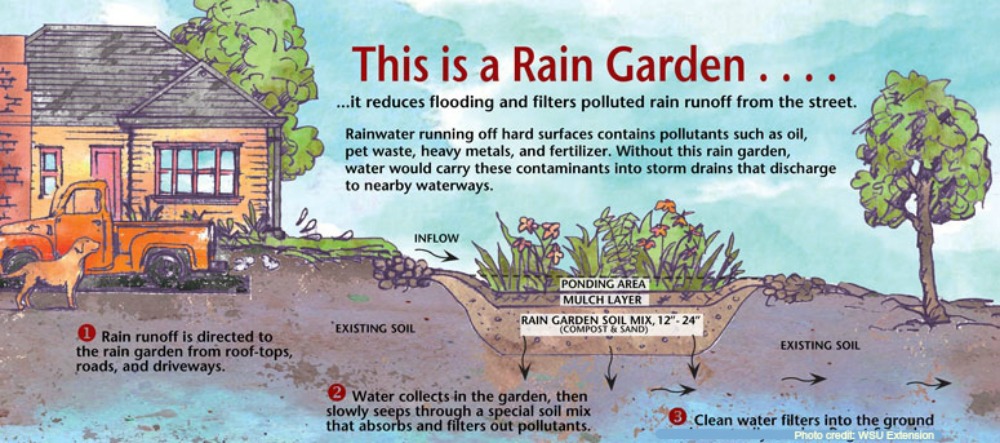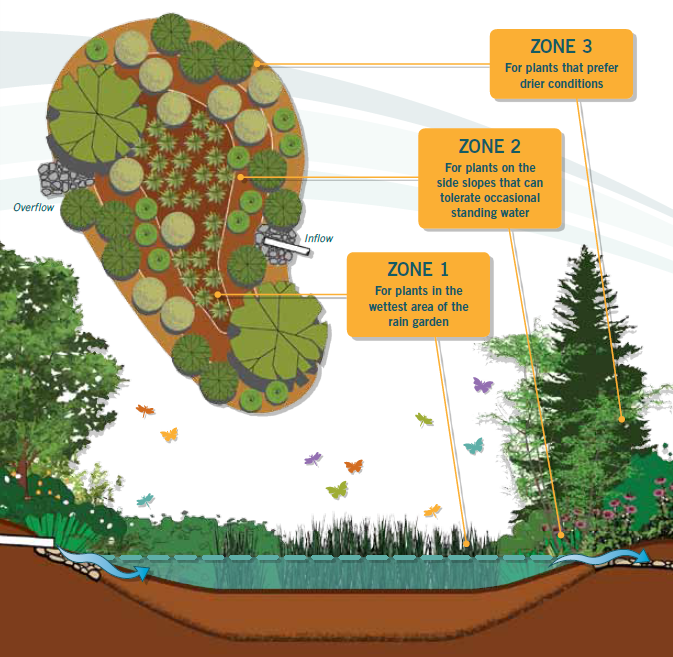Rain gardens are growing in popularity as drainage solutions for environmentally-conscious property owners. These carefully-designed landscapes add more than beauty to their surroundings. They are proven to have a significant impact in reducing the flow of contaminated water from urban areas to wetlands, streams, lakes, and other natural waterways.
Installing a rain garden is a powerful way to directly contribute a positive impact on the environment surrounding your home or business.
Why Do Rain Gardens Matter?
As communities grow and develop, buildings, roads, and rooftops replace native habitats. During times of precipitation, the original flow of water through the enviroscape is disturbed. Instead of being naturally filtered through pre-existing forests and soil, stormwater now flows at a high rate over hard surfaces and carries man-made pollutants with it. Erosion and increased flooding become problematic.
Additionally, the higher flow rate of water and contaminants that result from development cause real problems for regional aquatic life and water resources. However, rain gardens offer an exciting array of solutions.
- Slow erosion and alleviate flooding
- Decrease pollution and waste
- Clean runoff naturally
- Reduce the workload for wastewater facilities
- Can be created in public and private spaces of any shape and size, including businesses, residences, or public spaces
What Is A Rain Garden?
Rain gardens are bowl-shaped depressions in a landscape that collect and clean rainwater runoff from hard surfaces nearby, like driveways, roofs, parking areas, and patios.
They are designed with special soil mixes that allow speedy absorption of water — usually a combination of sand, topsoil, and compost. This amended soil filters runoff and also supports a variety of plant growth.
Note: Rain gardens are not permanent ponds. They are sized to allow temporary pooling after rain. In a well-designed garden, all water passes through very quickly, typically from one to two hours (maximum of one to two days) after a storm. This prevents stagnation and mosquitoes.
Photo: WSU Extension
There are a number of ways water can be diverted to a rain garden through a landscape. It may be that one approach works well for a back yard/patio area, but a different one is more effective for dealing with runoff issues in the front.
Design Features of a Rain Garden
Soil
Soil is where it all begins. Reworking the ground to provide the right blend of soil, sand, and compost is critical to having a healthy rain garden. Absorption, drainage, and filtration all rests on getting this foundation prepared correctly.
Plantings
There are three planting zones in a rain garden:
Zone 1 The wettest area, at the bottom of the rain garden. Important to install plants in this zone that can handle “wet feet” for several hours at a time.
Zone 2 The sloped sides of the garden, which may become wet from time to time. These plants provide stability and prevent erosion.
Zone 3 The perimeter of the rain garden, with the driest soil.
Since rain garden design is based on earth-friendly practice, using native plantings to fill out the three zones makes a lot of sense. Native plants create a nourishing habitat for local wildlife, birds, butterflies, and other important pollinators.
“Plants and soil work together in the rain garden. The plant roots and soil organisms build soil structure, create channels and pores to soak up and filter water, and improve nutrient and oxygen availability necessary to support an abundance of life. While plants help the rain garden absorb stormwater, they also create an attractive landscape for your yard and neighborhood.” — WSU Extension, Rain Garden Handbook for Western WA
How to Know If A Rain Garden Is Right For You
A rain garden may be a good fit for you if you answer “yes” to the following questions:
- Do you want to improve the landscaping and appearance of your property?
- Would you like to directly reduce the amount of pollutants reaching groundwater and storm drains in your community (as well as wetlands, streams, and other natural waters)?
- Would you like to reduce flooding, prevent sewer overflows, and erosion in streams by absorbing runoff from hard surfaces?
- Is providing habitat for beneficial insects and birds important to you?
- Would you like to be responsible for recharging local groundwater by increasing the amount of water that soaks into the ground on your property?
Let’s Get To Work
Frontier Landscaping offers professional expertise and support for residential and commercial clients committed to environmentally-conscious landscaping. While the best time for testing soil drainage and groundwater levels is in late winter months, we are available to walk you through the planning process for a rain garden at any time of year:
|
|
Call (360) 574-8979 or contact us to get started on your path to a cleaner, greener future.
Additional Reading: Washington State Extension Rain Garden Guide




